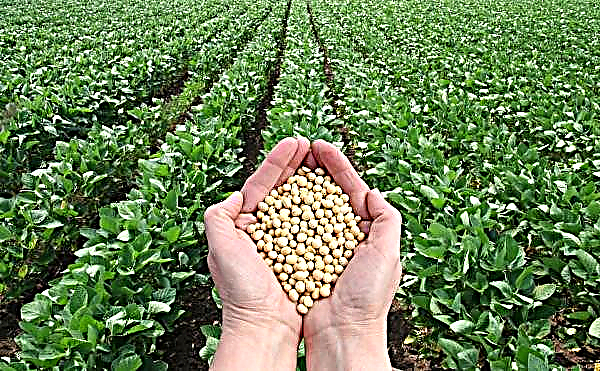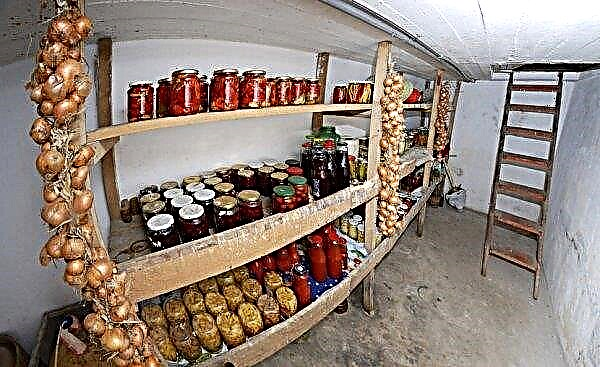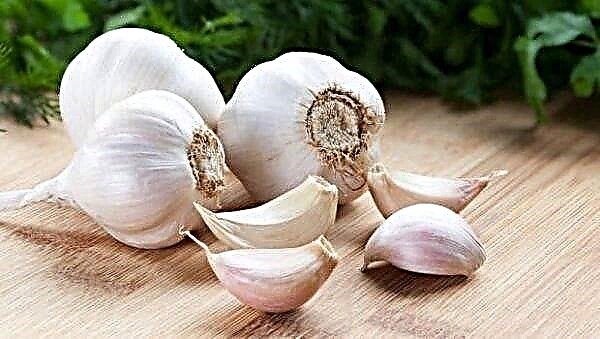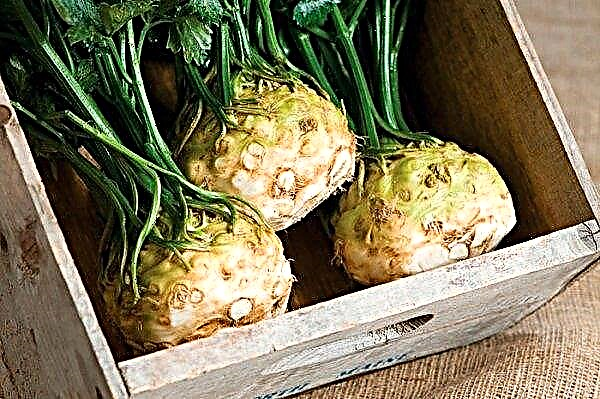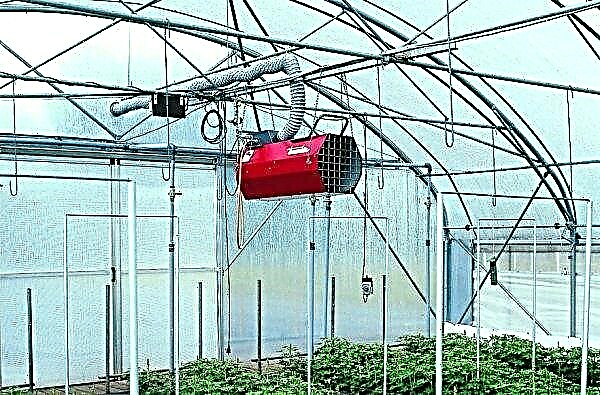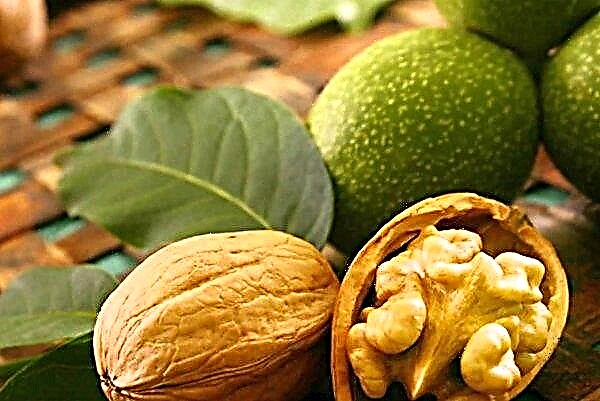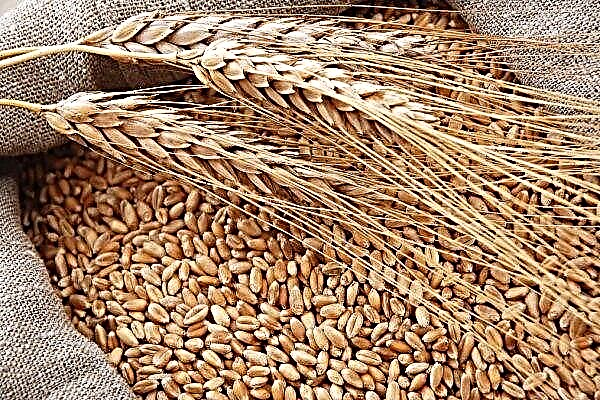Modern crop production is represented by many productive hybrids, so most of the old varieties are gradually losing their popularity. The exception is the tomato variety "wolf astronaut." The plant has a high yield, and is also able to grow in any climatic zones. What are these tomatoes? How to grow them in a summer cottage?
Grade description
Tomatoes "cosmonaut of wolves" are a product of amateur selection. The variety is characterized by high productive qualities. This makes it possible to grow a crop for home and industrial production. Tomato is considered one of the most adapted varieties for temperate climates.
Distinctive characteristics of the variety are obvious:Did you know? Variety of tomatoes "toosmonaut wolves» It was bred in 1985 by a Soviet engineer Igor Mikhailovich Maslov. The plant was named after the fiftieth anniversary of his friend, who died during space tests.
- standard bushes, indeterminate type, up to 2 m high;
- refers to mid-early crops;
- the crop matures in 110-125 days after transplanting;
- stalk is powerful, branched;
- medium-sized foliage, saturated green tint;
- bushes require periodic pruning and shaping;
- the fruits are large, weighing 300-400 g, but under optimal conditions can reach 600 g;
- fruits are glossy, saturated red shade;
- the shape of the fruit is round or slightly elongated;
- ripe tomatoes are juicy, fragrant, with moderate acidity or sweet;
- each inflorescence gives 6-8 fruits;
- from one bush you can collect 6-7 kg of fruit;
- the yield of the variety is about 20 kg per 1 sq. km. m ;;
- the variety is universal, its fruits are suitable for fresh consumption and cooking.
Photo gallery
Advantages and disadvantages
- Tomatoes "cosmonaut of wolves" have many advantages. Among them are:
- the fruits are distinguished by high palatability;
- Tomatoes are not prone to sharp acidity, sugar in the fruits make up about 4% of the total mass;
- high crop yield and fruit size;
- short growing season;
- universality of fruits.
- The main disadvantages of the variety are still there:
- low immunity to typical diseases of plants of the nightshade family;
- exactingness to the conditions of detention;
- the highest yield of the variety is achieved only in the greenhouse;
- the bushes require regular maintenance and garter.
Sowing seeds for seedlings
Cultivation of tomato seedlings is a prerequisite for growing crops. This is due to a rather long vegetative period of culture. In a temperate and subequatorial climate, the plant is not able to fully form the fruits before seasonal drops in temperature, so planting seedlings makes it possible to shorten the growing period in open ground by 2.5-3 months.
Optimal timing
Sow seeds for seedlings on average 50-60 days before planting tomato seedlings in open soil. The optimal period for this is 1-2 weeks after the thaw. So you can avoid spring frosts, which lead to the death of tomatoes. By this moment, 5-7 full leaves and a dense stem 30 cm long will form on the plants.
The optimal timing for planting tomatoes for seedlings are:
- in the southern regions: end of February - mid-March;
- in areas with a temperate climate: mid - end of March;
- in the northern regions: the beginning is the first half of April.
Important! The timing of sowing seedlings is strictly observed, otherwise the period of acclimatization of tomatoes in open soil increases significantly.
Soil mix
The most suitable substrate for tomato growth is fertile light soil with a low coefficient of moisture capacity. Such soils include well-fertilized loamy or sandy loamy soil. Such mixtures are prepared from turf land, peat and river sand (2: 1: 1). You can also use the purchased substrate from the flower shop, however, it should be "facilitated" by river sand or sawdust (3: 1).
The soil for tomato seedlings must be disinfected, this measure helps to eliminate the pathogenic microflora from it, which causes fungal and viral damage to seedlings. There are many methods of disinfecting the soil, but the following are considered the most effective:
- roasting in the oven (20-30 minutes, at a temperature of + 180 ° C ... + 200 ° C);
- microwave cooking (5-10 minutes, at maximum power);
- freezing in a freezer (2-3 days, at a temperature of -15 ° C ...- 20 ° C);
- dipping the mixture with boiling water;
- abundant watering of the soil with disinfectant solutions (1% potassium permanganate, 1% formalin).
Video: Soil for seedlings
Disinfection of the soil is carried out 7-10 days before sowing seeds, after which a clean substrate is placed in a warm, well-ventilated place. At rest, the mixture is aged before sowing, this gives it the opportunity to recover after an aggressive procedure. The natural restoration of optimal soil microflora in the future favorably affects the seedlings and assimilation of nutrients by plants.
Capacity for growing
Germinate seeds in special common boxes, garden cassettes, pots or plastic cups. Such containers should be non-toxic to plants, resistant to aggressive compounds. To avoid waterlogging of the soil, drainage holes should be provided in the vessel.
Before tamping with soil, boxes, cups and other garden containers are disinfected. Heat-resistant dishes are fried in the oven (20-30 minutes, at a temperature of + 180 ° C ... + 200 ° C), the remaining containers are treated with antibacterial solutions - 1% formalin or potassium permanganate, 70% alcohol. Wipe the inner and outer surfaces thoroughly with a liquid, after which the treated containers are dried naturally.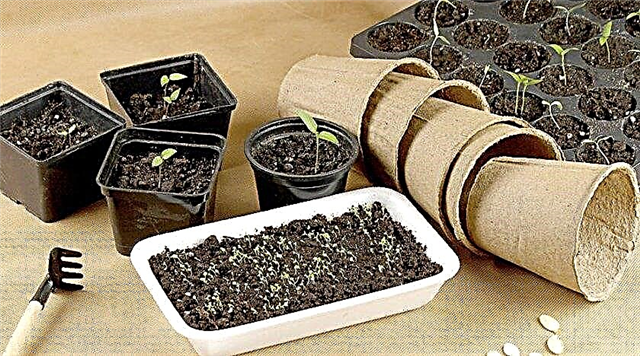 Tomatoes are sprouted on peat tablets. They are a compacted substrate, fertilized with all kinds of trace elements, vitamins, compounds important for the development of seedlings. Peat tablets are placed, for example, in a pot of plastic, wood, glass.
Tomatoes are sprouted on peat tablets. They are a compacted substrate, fertilized with all kinds of trace elements, vitamins, compounds important for the development of seedlings. Peat tablets are placed, for example, in a pot of plastic, wood, glass.
Did you know? Tomatoes contribute to the natural protection of the skin of the body from aging. This is explained by the increased content of lycopene in their composition (specific substance possessing antioxidant properties and the ability to slow down the body's oxidative processes).
Seed preparation
Seed pretreatment consists of two successive processes: disinfection and soaking in growth stimulants. Most often, cultivated plant varieties are grown only in the presence of high-quality seed grown at specialized enterprises. Such seeds often undergo disinfection and other processing in the laboratory, so they do not need preparatory processes. But if you grow tomatoes from your own harvested seeds, you can’t do without processing.
Disinfect seeds with antibacterial solutions. The most popular are:
- ethanol (70% solution) - 5-10 minutes;
- 1% potassium permanganate - no more than 10-15 minutes;
- soda solution (0.5-1%) - 20-24 hours.
 Soaking in growth stimulants is carried out immediately before sowing seeds. This measure is not mandatory, but it helps to accelerate the growth and development of sprouts, increase their immunity and the germination of sprouts to 90-100%. Soak the seeds for 2-4 hours at room temperature. To do this, use any kitchen or garden containers made of inert materials (ceramics, glass, stainless steel).
Soaking in growth stimulants is carried out immediately before sowing seeds. This measure is not mandatory, but it helps to accelerate the growth and development of sprouts, increase their immunity and the germination of sprouts to 90-100%. Soak the seeds for 2-4 hours at room temperature. To do this, use any kitchen or garden containers made of inert materials (ceramics, glass, stainless steel).
The most common drugs are:
- Epin Extra - 3 drops per 100 ml of water;
- "Zircon" - 2 drops per 300 ml of water;
- "Kornevin" - 1 g per 1 liter of water;
- "Sodium humate" - 0.5 g per 1 liter of water.
Sowing seeds
Sow seeds in boxes, common containers, pots or plastic cups with a densely packed and well-moistened substrate, and seeds in individual holes or in general rows with a depth of 1-2 cm. A distance of 3-4 cm should also be maintained, otherwise when the plant sprouts will enter the competition. 1-2 seeds are placed in each well; later on, only one of the most viable sprouts is left.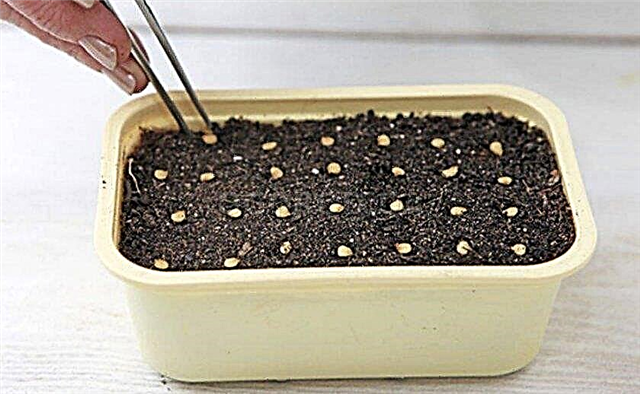 Common rows are cut with a row spacing of 3-4 cm, the seeds are sown in bulk, with a distance of 2-3 cm. The seed is placed on the surface of the entire soil, after which they are covered with a layer of soil 1-2 cm thick on top. This method is quite easy and especially common among novice gardeners, however, does not provide uniform sowing. In this case, the yield of seedlings from one package of seeds is reduced, and its germination is slowed down significantly. If necessary, such crops are weeded, leaving individual shoots at a distance of 3-4 cm.
Common rows are cut with a row spacing of 3-4 cm, the seeds are sown in bulk, with a distance of 2-3 cm. The seed is placed on the surface of the entire soil, after which they are covered with a layer of soil 1-2 cm thick on top. This method is quite easy and especially common among novice gardeners, however, does not provide uniform sowing. In this case, the yield of seedlings from one package of seeds is reduced, and its germination is slowed down significantly. If necessary, such crops are weeded, leaving individual shoots at a distance of 3-4 cm.
On peat tablets or in individual cassettes, seed germination is carried out in the same way. After sowing, the seeds are covered with a 1-2 cm layer of soil, after which the crops are covered with transparent glass or a plastic film.
Seedling Care
Before the first shoots, the containers with seeds are kept in a warm place at a temperature of + 25 ° C ... + 28 ° C. Under such conditions, in just 3-4 days, almost all seeds germinate. Under a film shelter, conditions of high humidity (80–90%) should form, on which the germination of shoots directly depends. The first 1-2 days, young shoots require intense, continuous lighting throughout the day. To do this, they are artificially illuminated, for example, with a table lamp.
2-3 days after germination, containers with plants are transferred to the south, well-lit window sill with a temperature of + 20 ° C ... + 25 ° C. Under the shelter, the plants are kept for 2 weeks, after which they are gradually removed. Until this time, seedlings create a 16-hour daylight. After removing the protective shelter, the seedlings are kept at a temperature of + 20 ° C ... + 25 ° C. From this moment, plants need watering, since before that, a dome made of glass or film reliably protected the crops from drying out. Water the tomatoes evenly and in small portions, avoiding excessive moisture or drying out the substrate. Therefore, the procedure is carried out 1 time in 1-2 days. At this time, plants do not require additional lighting, otherwise it can cause excessive stretching of the seedlings up.
After removing the protective shelter, the seedlings are kept at a temperature of + 20 ° C ... + 25 ° C. From this moment, plants need watering, since before that, a dome made of glass or film reliably protected the crops from drying out. Water the tomatoes evenly and in small portions, avoiding excessive moisture or drying out the substrate. Therefore, the procedure is carried out 1 time in 1-2 days. At this time, plants do not require additional lighting, otherwise it can cause excessive stretching of the seedlings up.
Young tomatoes are fed regularly. The first fertilizer is applied 3 weeks after emergence, and then the procedure is carried out every week. Fertilize tomatoes with organic fertilizers. Plants respond best to manure diluted 1:10. You can use purchased drugs. Among them, mixtures based on humic substances, guano or biohumus are considered the most effective.
Important! Tomatoes are fertilized with half the recommended dose of purchased fertilizers, otherwise the root system of plants can get a chemical burn.
Seedling hardening
Seedlings begin to harden 1-2 weeks before the estimated date of transfer of tomatoes to open soil. The procedure helps prepare tomatoes for environmental variability, as well as ensure their resistance to all kinds of negative factors of open soil. By this time, about 7 full-fledged leaves and a stable stem about 30 cm long should form on the plants. The procedure begins with a gradual decrease in the temperature in the room with plants to + 18 ° C. To do this, temporarily move the seedlings to the veranda or balcony. After a few days, you can begin the basic procedure, when the containers with seedlings are gradually transferred to open air. The first few days, the plants are kept in the open air for only a few hours, after which they are again returned to a warm room. Gradually, the duration of the stay on the street is increased to 12-16 hours. In the last few days, before planting in the garden, tomatoes are allowed to spend the night outdoors, after which the plants become completely immune to sudden changes in temperature.
After a few days, you can begin the basic procedure, when the containers with seedlings are gradually transferred to open air. The first few days, the plants are kept in the open air for only a few hours, after which they are again returned to a warm room. Gradually, the duration of the stay on the street is increased to 12-16 hours. In the last few days, before planting in the garden, tomatoes are allowed to spend the night outdoors, after which the plants become completely immune to sudden changes in temperature.
Important! Hardening is carried out only at temperatures above + 12 ° C, otherwise the tomatoes may die.
Planting seedlings in a permanent place
Young tomatoes are planted at the age of 55-65 days. Depending on climatic conditions, this period lasts from the beginning of May until the first days of June. By this time, stable weather conditions with an air temperature of at least + 15 ° C should form. In greenhouses, tomatoes are planted a few weeks earlier. Indoors must not be colder than + 15 ° C. Only a warm, cloudy and calm day is suitable for transplantation.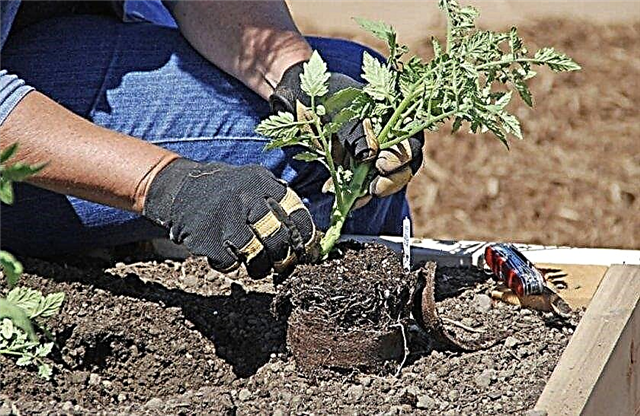 Seedlings are planted in separate holes or common rows, where the distance between plants is about 60-70 cm. Thus, no more than 2 bushes are grown on one square meter. This is a must when cultivating a variety. Subsequently, powerful and tall bushes will form from small ones, the development of which will require a lot of free space.
Seedlings are planted in separate holes or common rows, where the distance between plants is about 60-70 cm. Thus, no more than 2 bushes are grown on one square meter. This is a must when cultivating a variety. Subsequently, powerful and tall bushes will form from small ones, the development of which will require a lot of free space.
Tomatoes grow on well-fertilized and loose substrates, so it is best to plant them on sandy or loamy soils. If the soil is heavier, before planting the upper layer is mixed with river sand, sawdust and peat (3: 1: 1). Such a mixture will help to achieve an optimal soil microclimate, as well as increase crop productivity.
Outdoor Care
Tomato care “wolf astronaut” implies compliance with the basic rules of agricultural cultivation culture, which are used for other varieties. Particular attention should be paid to the proper watering and feeding regimen, without which tomatoes often lose their yield.
Watering
Tomatoes are watered not often, but abundantly. During a drought, the procedure is carried out no more than 1-2 times a week. Watering tomatoes is not recommended during rains, as this can cause rotting of the root mass of the bush. When watering, the soil is thoroughly moistened, the moisture should saturate it to a depth of 50-70 cm.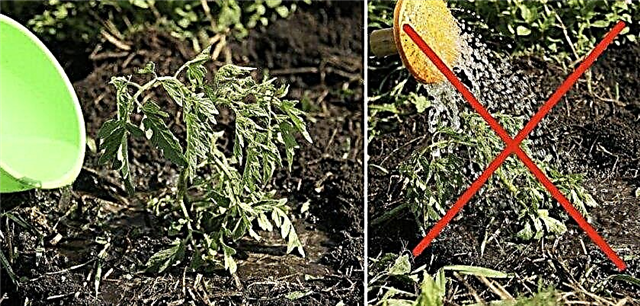 Watering is carried out early in the morning or late in the evening, otherwise in the open sun the moisture will instantly evaporate. When watering the beds, they irrigate exclusively the soil (type of watering - under the root). Humidification of the green mass of plants is not desirable, as it helps to create a favorable environment for the development of all kinds of infections, to which the tomatoes "wolf astronaut" are not resistant.
Watering is carried out early in the morning or late in the evening, otherwise in the open sun the moisture will instantly evaporate. When watering the beds, they irrigate exclusively the soil (type of watering - under the root). Humidification of the green mass of plants is not desirable, as it helps to create a favorable environment for the development of all kinds of infections, to which the tomatoes "wolf astronaut" are not resistant.
Top dressing
Tomatoes need regular top dressing, so you can fertilize the beds with tomatoes every 2 weeks.
In most cases, you can do three feedings of the culture. The first should be carried out 2-3 weeks after planting, the next - at the very beginning or during flowering, as well as in the phase of filling the fruits. Then it will be possible to achieve not only the active growth of the green mass of the bush, but also the formation of large and juicy fruits.
All kinds of phosphorus-based mineral fertilizers are used to fertilize tomatoes. (superphosphate, nitroammophosku). The amount of nitrogen introduced into the soil should be minimal, otherwise it will lead to stretching of the bushes. Mineral fertilizers can be replaced with chicken droppings diluted with water 1:10.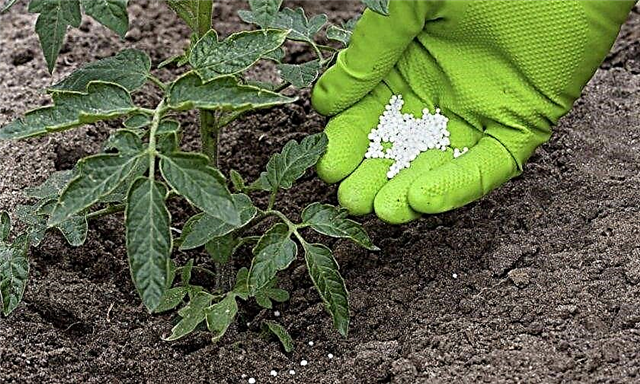 Tomatoes respond well to micronutrient nutrition. The most effective are mixtures based on boron or magnesium. They are brought in at the beginning of flowering or when the plants are already blooming wildly.
Tomatoes respond well to micronutrient nutrition. The most effective are mixtures based on boron or magnesium. They are brought in at the beginning of flowering or when the plants are already blooming wildly.
Did you know? In addition to the food industry, tomatoes are also actively used in the cosmetics industry. Extracts from the fruits and leaves of the plant are used for the manufacture of male and female perfumes (Mandarina Duck, Eutopie).
Shaping and tying bushes
Tomatoes "cosmonaut of wolves" belong to one of the tallest varieties of tomatoes, so they require garter and pinching. Without this, the bushes will not give the desired yield. Tie bushes with a length of 50 cm or more. To do this, the stem is fixed on a vertical support or horizontal rod. Plants are tied just below the bosom of the shoots with a dense twine or nylon cord. The formation of a bush is started 2-3 weeks after the planting of tomatoes in open soil. It is necessary that the branched plant becomes with two main stems, therefore all side stepsons are subject to removal. Pasynkovka is carried out regularly, at least 1 time per week (this way it is possible to protect the plant from ineffective shoots). The lower leaves of the bush, as well as those that shade the brushes with fruits, are also removed. This makes it possible to accelerate the ripening of fruits, as well as to achieve maximum crop yield.
The formation of a bush is started 2-3 weeks after the planting of tomatoes in open soil. It is necessary that the branched plant becomes with two main stems, therefore all side stepsons are subject to removal. Pasynkovka is carried out regularly, at least 1 time per week (this way it is possible to protect the plant from ineffective shoots). The lower leaves of the bush, as well as those that shade the brushes with fruits, are also removed. This makes it possible to accelerate the ripening of fruits, as well as to achieve maximum crop yield.
Soil care
Soil care on tomato beds involves weeding, loosening and mulching the soil. Weeding of beds is carried out regularly. This helps protect the plantings from weeds, the development of which causes inhibition of the growth of fruit crops. The first procedure is carried out 2 weeks after transplanting seedlings (loosened to a depth of 8-10 cm). Further weeding is carried out as necessary, but at least 1 time in 2-3 weeks.
The first loosening of tomatoes is combined with weeding the beds, then the procedure is carried out every week, after watering (to a depth of 2-3 cm). This agrotechnical technique helps to saturate the soil with oxygen, which improves the growth and development of tomatoes.
Mulching of tomatoes is carried out as necessary. The procedure helps to increase tomato yields up to 30%, as well as simplify the care of plantings. 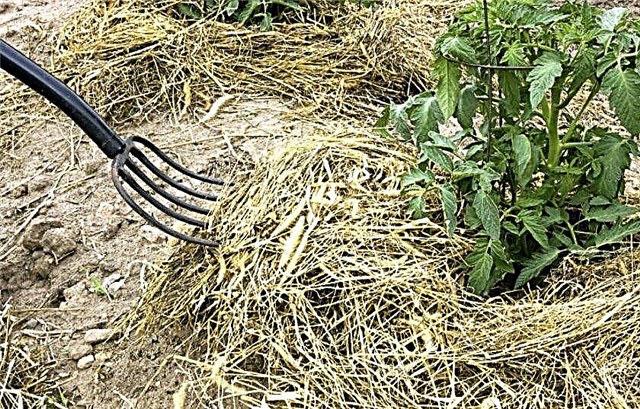 Mulch reduces the loss of moisture and heat from the soil, which creates an excellent microclimate for the effective interaction of plants with nutrients and microflora of the soil. It will take mulching after the seedlings are fully accustomed to the conditions of open soil, it is effective even before flowering.
Mulch reduces the loss of moisture and heat from the soil, which creates an excellent microclimate for the effective interaction of plants with nutrients and microflora of the soil. It will take mulching after the seedlings are fully accustomed to the conditions of open soil, it is effective even before flowering.
A lot of materials are used as mulch, but organic mixtures based on:
- straw;
- hay;
- humus;
- manure
- sawdust.
Reviews
I had Cosmonaut Volkov from the Russian Garden. Some small, 60 cm, miracle has grown, with ordinary, red fruits, 100-150 grams each. True early. But this is clearly a reassortment.

